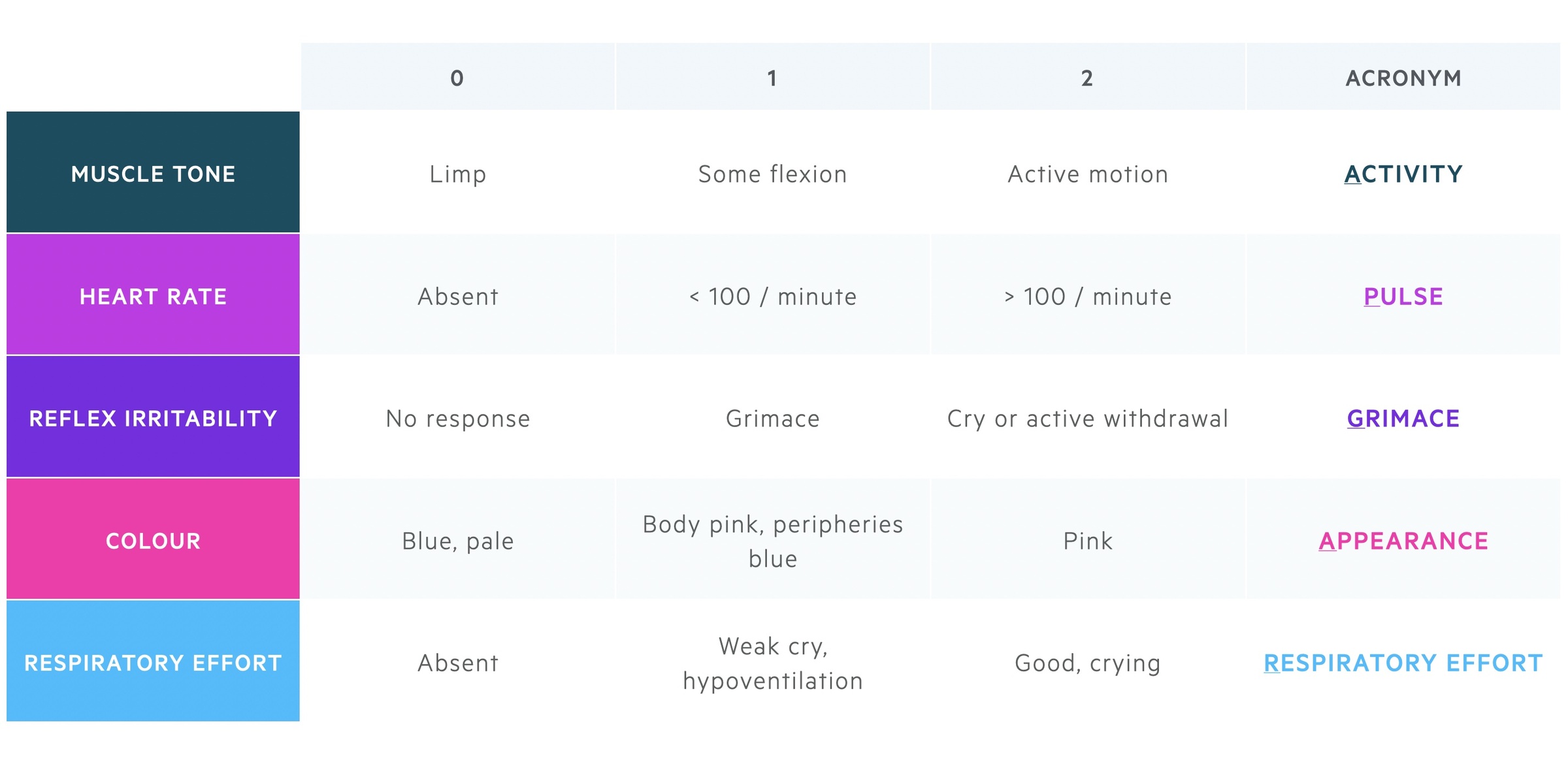Overview
The APGAR score is conducted in term infants as an assessment of clinical status immediately following birth.
It was developed by an American anaesthetist, Dr Virginia Apgar, in 1952 as a quick assessment of clinical status. For those interested, a reprint of the original publication can be found here.
The score has five components; heart rate, respiratory effort, muscle tone, reflex irritability, and colour. Each receives a score from 0 to 2 with a maximum score of 10.
Score
The score is calculated at one and five minutes after cleaning and drying the baby in a warm towel.
If necessary it may be repeated after this. It should not be used as the sole measure of clinical status and instead forms a small part of the larger neonatal assessment.

Accurate interpretation requires knowledge and experience. Scores of 7-10 are generally considered ‘normal’. A lower score is a prognostic indicator of worse outcomes and the need for immediate review by a senior medical professional. A score of 0-3 at 5 minutes is associated with increased neonatal mortality and cerebral palsy.
The APGAR score has numerous limitations. It may be affected by maternal anaesthesia, gestational age and inter-operator variability amongst other limitations.
A note on colour
Is ‘pink’ the best available description for the appearance of a newborn black baby?
In the original publication by Dr Virginia Apgar in 1953, she notes that colour was ‘by far the most unsatisfactory sign’ citing one of the issues to be interpretability of the ‘skin of colored children’.
There are several papers published on the matter. Most (based in the US) concede interpretation of colour and the description ‘pink’ contributes to the lower average score of black newborns. Their analyses (that we cannot detail here in full) appear to show APGAR score remains a reasonable predictor of neonatal mortality in all races.
Perhaps most informative is a published abstract by Dr Brandi Adams et al which found when relevant medical professionals were asked ‘if “pink” accurately described the skin color of vigorous African American newborns’, 57.4% of respondents said ‘No’. It may be that an update to the list of descriptors is long overdue.

